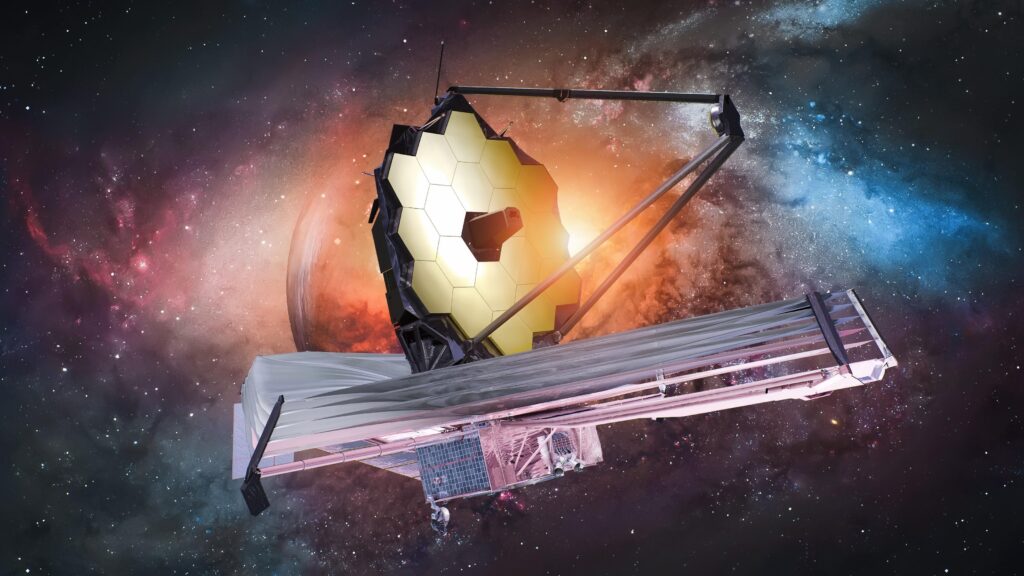Revolutionary Discoveries by the James Webb Space Telescope: Unveiling the Secrets of Ancient Black Holes
In a remarkable advancement that is transforming our comprehension of the universe, the James Webb Space Telescope (JWST) has successfully addressed a long-standing enigma regarding black holes from the early cosmos. Launched in December 2021, this cutting-edge observatory has granted astronomers unparalleled access to insights about how black holes formed and evolved in their infancy, tackling questions once thought insurmountable. By delving deep into time and space, JWST is ushering in a new era in astrophysics, illuminating the conditions that led to these mysterious giants billions of years ago. This breakthrough not only enriches our understanding of black holes but also provides a window into the nascent universe, encouraging further investigation into the fundamental forces that sculpted our cosmic landscape.
James Webb Space Telescope Illuminates Ancient Black Hole Formation
The James Webb Space Telescope (JWST) has made significant progress in elucidating how black holes emerged during the early universe—a domain previously regarded as intricate and elusive by scientists. With its sophisticated instruments, JWST has captured extraordinary details from ancient galaxies hosting supermassive black holes believed to have formed just hundreds of millions of years post-Big Bang. This revelation challenges earlier beliefs about when and how these celestial entities came into existence, prompting a transformative shift within astrophysical research.
One particularly fascinating discovery involves identifying massive black holes within galaxies exhibiting growth rates once considered unattainable. This suggests that these colossal entities may have developed through processes such as rapid gas accumulation and mergers between smaller black holes within densely populated regions. The following elements are crucial for understanding this phenomenon:
- Cosmic Expansion: The swift expansion of space allowed for dense clusters rich in gas.
- Ecosystem Conditions: Unique environmental factors during cosmic infancy may have accelerated black hole growth.
- Merging Dynamics: Evidence supports hierarchical merging processes contributing to supermassive black hole development.
The table below summarizes key variables associated with ancient black hole formation:
| Causal Factor | Description of Impact |
|---|---|
| Massive Star Production | Paves way for potential formation of new black holes. |
| Densely Packed Gas Clouds | Aids rapid mass accretion onto forming structures. |
Novel Discoveries on Growth Patterns of Primal Supermassive Black Holes
The latest observations from JWST have revealed groundbreaking insights regarding how early supermassive black holes expanded—significantly altering our perspective on their origins during cosmic infancy. Utilizing high-resolution imaging alongside infrared technology, astronomers can now peer back over 13 billion years to study these massive objects dating back just one billion years after the Big Bang. This unprecedented capability sheds light on how these titanic structures amassed mass at astonishing velocities.
The findings indicate that primordial supermassive black holes grew at rates faster than previously theorized—challenging established models concerning their evolution. Key contributors to this rapid growth include:
- Adequate Gas Supply: Dense clouds present in early epochs provided ample material for accretion processes.
- Energized Merger Events: High-density environments fostered frequent collisions among celestial bodies driving enhanced growth rates for emerging black holes.
- Efficacious Energy Transformation:This suggests an ability among some primordial blacks to convert accumulated mass efficiently into energy leading to heightened luminosity levels.
The table below encapsulates observed ancient supermassive blacks along with their estimated masses and formation redshifts:
| Name of Black Hole | Total Mass Estimate (Billion Solar Masses) | Date Formation Redshift (z) |
|---|---|---|
| BHM-1 | 1 .5 td > | 7 .5 td > |
| BHM -2 | 2 .0 | 6 .8 |
